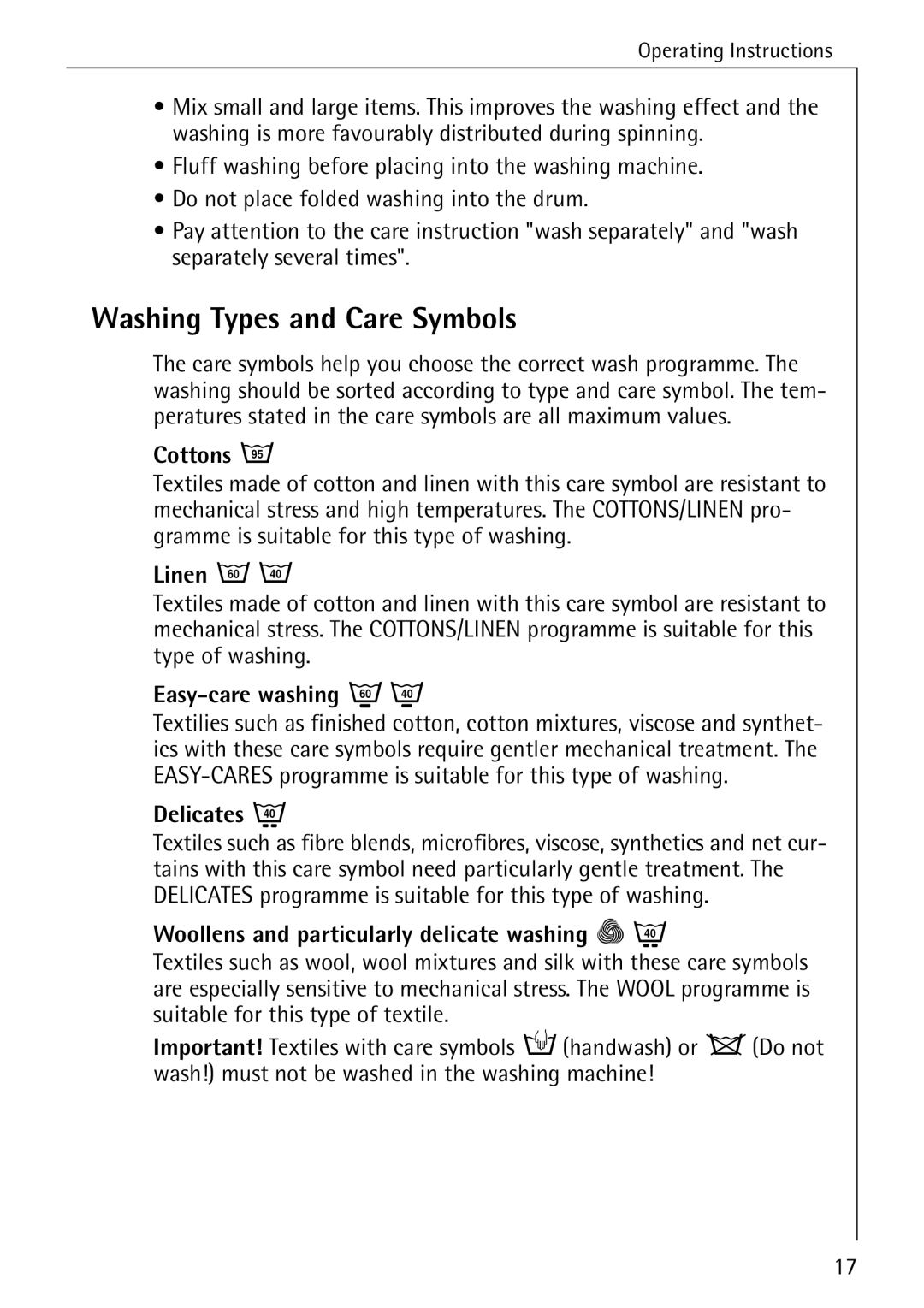
Operating Instructions
•Mix small and large items. This improves the washing effect and the washing is more favourably distributed during spinning.
•Fluff washing before placing into the washing machine.
•Do not place folded washing into the drum.
•Pay attention to the care instruction "wash separately" and "wash separately several times".
Washing Types and Care Symbols
The care symbols help you choose the correct wash programme. The washing should be sorted according to type and care symbol. The tem- peratures stated in the care symbols are all maximum values.
Cottons ç
Textiles made of cotton and linen with this care symbol are resistant to mechanical stress and high temperatures. The COTTONS/LINEN pro- gramme is suitable for this type of washing.
Linen è ë
Textiles made of cotton and linen with this care symbol are resistant to mechanical stress. The COTTONS/LINEN programme is suitable for this type of washing.
Easy-care washing êí
Textilies such as finished cotton, cotton mixtures, viscose and synthet- ics with these care symbols require gentler mechanical treatment. The
Delicates ì
Textiles such as fibre blends, microfibres, viscose, synthetics and net cur- tains with this care symbol need particularly gentle treatment. The DELICATES programme is suitable for this type of washing.
Woollens and particularly delicate washing 9 ì
Textiles such as wool, wool mixtures and silk with these care symbols are especially sensitive to mechanical stress. The WOOL programme is suitable for this type of textile.
Important! Textiles with care symbols ï(handwash) or ñ(Do not wash!) must not be washed in the washing machine!
17
